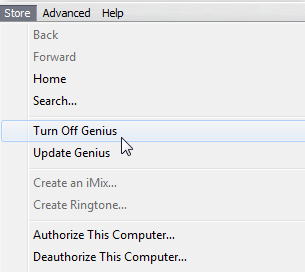
- #Windows 10 file copy fast then slows down free#
- #Windows 10 file copy fast then slows down windows#
This can easily prevented by activating presentation mode: press Win+X to switch it on. They may or may not apply to other versions of Windows.Īnother small thing I learned: you do not want your system to go to sleep in the middle of the copy job. I've tried all the disabling of TCP chimney/offloads/RSS and even the disabling of digitally encrypt or sign data. It starts at about 110-115MB/s and then drops to about 5-15MB/s. This conclusion is consistent with my empirical findings – turning the write cache on did not substantially change the overall time for the copy job to complete. We start copying it, and it runs decent until about 20-25 of the file or around 1-2 minutes, and then it slows to a crawl. That conveys the impression of a nice steady transfer, but it does not change the overall transfer rate. So when looking at a large copy job, the write cache mainly levels the transfer rate curve. As soon as the cache is filled, the transfer rate is reduced to the actual write performance of the disk again (in this case: to the rate the USB chip in the drive enclosure can cope with). A write cache can speed up writes significantly, but only if a substantial amount of the data to be written fits into the cache. While it is easy to mark this as another stupid idea from Redmond (after all, performance is king to many of us), I find it more interesting to ask whether copy performance is affected at all.
#Windows 10 file copy fast then slows down windows#
What can we learn from this? Obviously, Windows disables the write cache for external hard drives in order to reduce the impact of users unplugging their disks without notifying the OS first by clicking on the “Safely Remove Hardware” icon.

With the write cache enabled, the transfer rate settled at about 16 MB/s. A reboot later the oscillations were gone. This is on the “Policies” tab, where I changed the setting from “Optimize for quick removal” to “Optimize for performance”. Interestingly, the write cache was disabled. As you may have guessed, messing with the power plan did not change a thing.įinally, after googling around fruitlessly, I checked the external hard disks’ properties in device manager. The system was on the “balanced” power plan, which allows the OS to reduce the CPU frequency and do other things to reduce energy consumption. Then I played around with the power settings. It is disappointing to realize your enemy is not always the culprit. I deactivated it, checked Total Commander’s copy speed indicator, and found … no change. Things like this make me really unhappy… Who’s the Bad Guy? It did not take me long, though, to notice a strange phenomenon: the copy speed would oscillate between 8 and 24 MB/s.įor 10-20 seconds it would copy quickly at around 24 MB/s, only to drop to around 8 MB/s for a while. I plugged the USB cables in and made my faithful Total Commander do the work. At first, I did not give this simple task much thought. I also have a problem on the server I'm making a virtual copy of with SQL Server memory usage, but that seems to have stabilized.I just had the “pleasure” of having to copy the contents of a terabyte USB disk to another similar USB drive. I never used to worry about this stuff until 64-bit Windows came along. Wondering if folks smarter than I am know the magic answer that makes this go away.

I don't think its my storage controller, as I've copied multi-GB files around on the server locally without a problem. It gets 16MB/sec which is pretty crappy but at least its consistent. I tried ESEUtil and doesn't do the memory thing, but its not very fast. I see this fast/slow/fast/slow behaviour in the FTP client's transfer rate numbers, and similar behaviour in the network So I used Filezilla as my client, and I see similar high memory usage (although it goes up to 75% instead of 99%), and the transfers start out fast, and then gets really slow.

#Windows 10 file copy fast then slows down free#
Unfortunately the Windows FTP client wants to use a Temp file on C:\ for its work, which won't work since I don't have that much free space on C. If I then try to copy the 44GB VMDK file to the server via Windows File Sharing, the server eventually gets all of its memory consumed behind the scenes and the file transfer slows to a crawl. I thought it was a memory leak in VMWare Converter, but doing the conversion on a different 32-bit server running Server 2008 doesn't have the problem, as long as I do the conversion to the 32-bit server's local disk. I discovered that in the process of copying the 44GB VMDK file to the server that it runs out of memory. I have VMWare server 2.0 running on it, and I want to do some P2V conversions so I can test an application's service pack. I have a 64-bit server, Xeon 5405, with 14GB memory, and a Areca 1680 SATA storage controller, that I use for backups, NMS, and testing.

Copying large file to remote server causes it to run out of physical memory


 0 kommentar(er)
0 kommentar(er)
